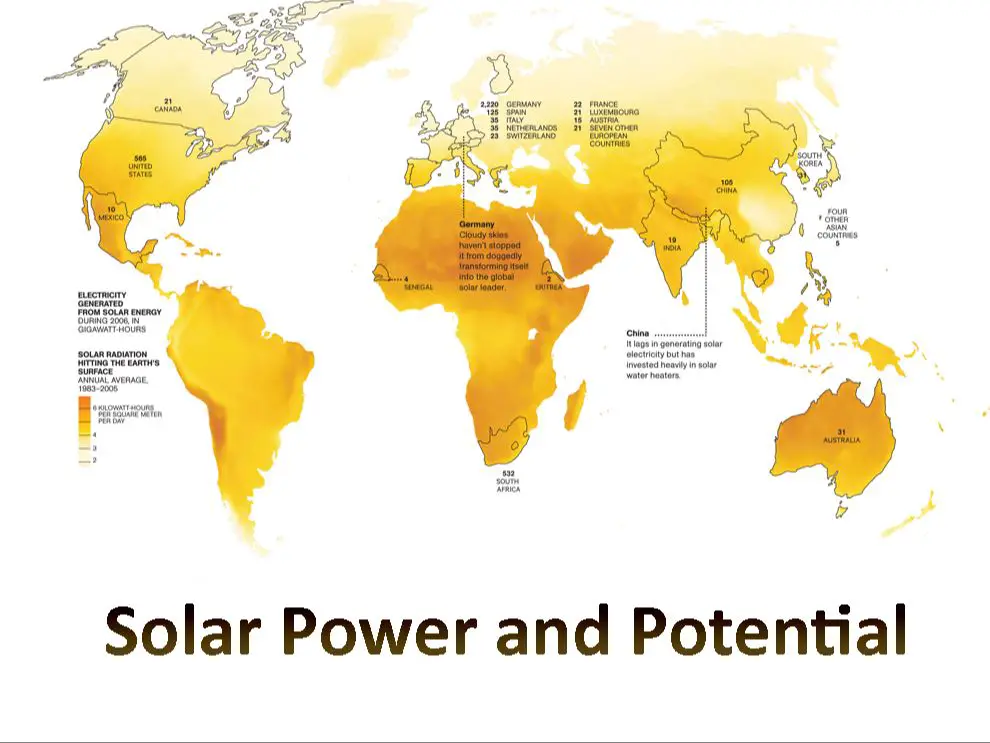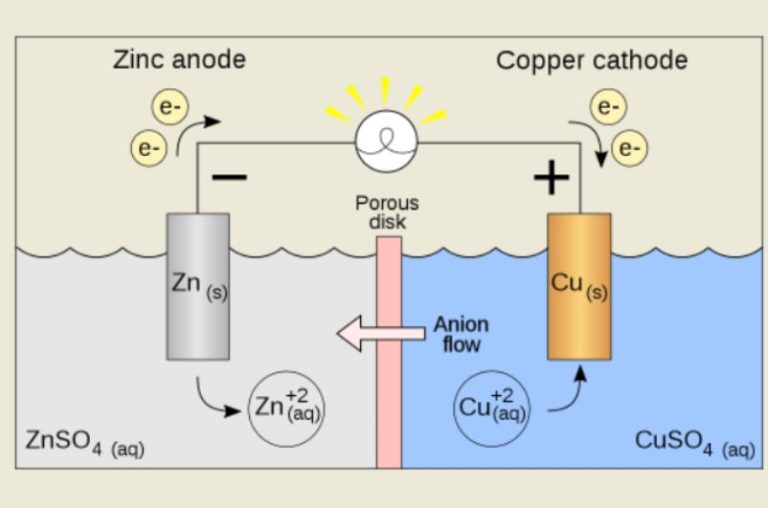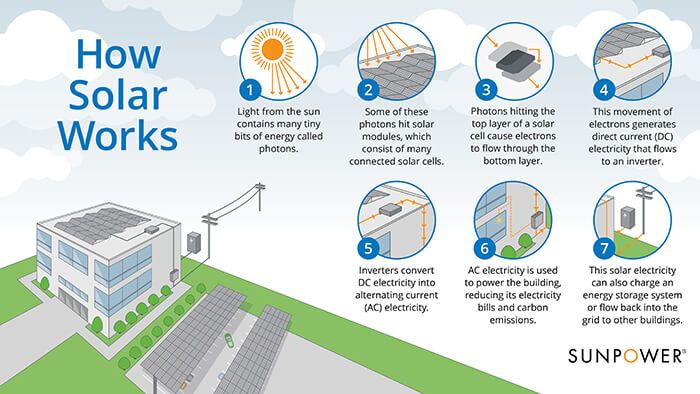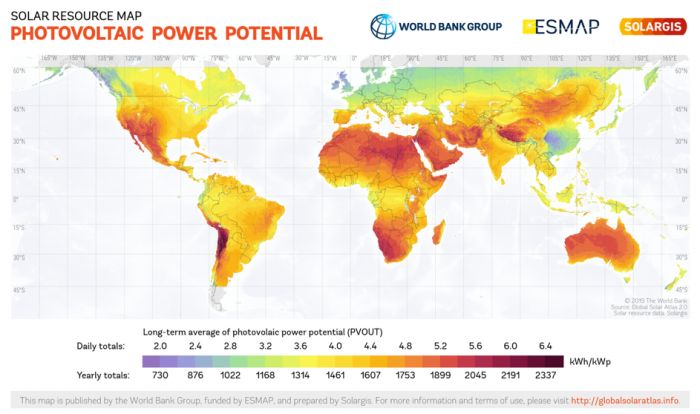Where Is Solar Energy Or Energy From The Sun Is Contained?

Solar energy is radiant light and heat from the Sun that is harnessed using a range of ever-evolving technologies such as solar heating, photovoltaics, solar thermal energy, solar architecture, molten salt power plants and artificial photosynthesis (https://www.empower-solar.com/en/blog/why-choose-solar-importance-of-solar-energy-empower-solar/). It is a renewable energy source and a clean fuel that provides an alternative to fossil fuels. Solar energy originates from thermonuclear fusion reactions deep within the Sun. It radiates throughout the universe and is absorbed by the Earth’s atmosphere, land and oceans.
Solar energy technologies convert sunlight into electrical energy or heat. For example, photovoltaics use solar cells to directly convert sunlight into electricity while solar heating systems harness the Sun’s thermal energy to provide hot water. Solar energy can be used for a variety of applications including generating electricity, providing light and hot water for homes, heating spaces and water for industry, and even cooling air and water.
The Sun
The Sun is the largest object in our solar system and the source of almost all energy on Earth. The Sun has a diameter of about 1.4 million kilometers and contains about 99.8% of the total mass of the solar system (NASA, 2021).
The Sun is composed mostly of hydrogen and helium gas. The core of the Sun is extremely hot, around 15 million degrees Celsius. Inside the Sun’s core, nuclear fusion reactions take place that convert hydrogen into helium and release huge amounts of energy in the process (Bernadotte, 2022).
The primary way the Sun produces energy is through nuclear fusion. The high temperature and pressure in the core cause hydrogen atoms to come together and form helium. In the process, some of the mass of the hydrogen is converted to energy as described by Einstein’s famous equation E=mc2. The energy released by fusion reactions in the core is so intense that it radiates outward and eventually escapes from the outermost layer of the sun, called the photosphere (European Space Agency, 2019).
The energy released by the Sun’s core reaches the Earth mainly in the form of visible light, ultraviolet radiation, and other parts of the electromagnetic spectrum. The Sun emits radiation over the entire electromagnetic spectrum and produces all of the wavelengths that exist in nature (NASA, 2019).
Radiation from the Sun
The most important type of solar radiation is light or electromagnetic radiation emitted by the sun. The sun produces energy through nuclear fusion reactions in its core, which emit photons in the form of electromagnetic radiation. This radiation travels outward from the sun and spreads across space. About 10% of the sun’s radiation eventually reaches the planets like Earth.
The wavelengths of solar radiation span the entire electromagnetic spectrum, from radio waves to visible light to x-rays and gamma rays. However, most of the radiation that reaches Earth is in the visible range, along with ultraviolet and infrared radiation. Visible light constitutes about 43% of the solar radiation that reaches the top of Earth’s atmosphere. Infrared makes up 49% and ultraviolet is 8%.
The amount of solar energy reaching the Earth is immense. The solar irradiance at the top of the atmosphere is about 1,366 watts per square meter. Spread across the Earth’s entire surface area, the total amount of solar energy reaching Earth is 174 petawatts. That’s 174 with 15 zeros after it! This energy drives photosynthesis in plants, ocean and atmospheric circulation, and of course provides daylight. It is also the ultimate source for wind, hydroelectric, and fossil fuel energy.
Source: https://www.arm.gov/news/features/post/73286
Absorption of Solar Radiation
As sunlight passes through Earth’s atmosphere, some of the solar radiation is absorbed by gases like ozone, water vapor, carbon dioxide and methane. According to NASA, about 20% of incoming solar radiation is absorbed by these atmospheric gases before reaching the surface [1]. The absorption of solar radiation by atmospheric gases has a warming effect on the atmosphere.
This absorption affects the amount of solar energy that ultimately reaches Earth’s surface. According to research from UC Berkeley, about 30% of the sunlight that enters Earth’s atmosphere is reflected back into space by clouds, gases and suspended particles. Of the remaining 70% that makes it to the surface, about half is absorbed while the rest is reflected [2]. So in total, only around 35% of the original solar radiation is absorbed at the surface after passing through the atmosphere.
Reaching the Earth’s Surface
The amount of solar radiation reaching the Earth’s surface varies based on several factors. The sun emits direct and diffuse radiation. Direct radiation travels straight from the sun to the Earth’s surface without being scattered. Diffuse radiation is scattered by molecules and particles in the atmosphere before reaching the surface. On a clear day, about 90% of the solar radiation is direct and 10% is diffuse. On cloudy days, nearly all the radiation reaching the surface is diffuse because the cloud cover blocks and scatters the direct radiation.1
The amount of solar radiation also depends on the time of day, time of year, and location on Earth. Areas near the equator receive more direct sunlight year-round than areas farther north and south. The amount of sunlight reaching a location varies seasonally based on the tilt of the Earth’s axis. Solar radiation peaks at solar noon when the sun is at its highest point in the sky. The sunlight must travel through more atmosphere when the sun is lower in the sky, attenuating the radiation before it reaches the surface.2
Absorption at the Surface
The Earth’s surface absorbs a significant portion of the solar radiation that reaches it. Different surfaces absorb and reflect sunlight differently. For example, ice and snow reflect up to 90% of sunlight while forests absorb up to 90% (https://earthobservatory.nasa.gov/features/EnergyBalance/page4.php). On average, around 48% of incoming solar radiation is absorbed by the Earth’s surface.
Oceans and other bodies of water absorb sunlight and convert it into heat very effectively. Water absorbs visible light waves while reflecting longer infrared waves, allowing for absorption of energy. Land surfaces are more variable in absorption based on color, texture, and composition. Darker surfaces like forests tend to absorb sunlight, while lighter surfaces like snow reflect it. When sunlight is absorbed, it is converted into heat at the surface. This heat is transferred to the atmosphere through convection and drives circulation patterns in the atmosphere and oceans.
Photosynthesis
Photosynthesis is the process plants use to convert sunlight into chemical energy in the form of glucose. This process is critical for nearly all life on Earth as it provides the basic food source for plants and the animals that eat plants. Solar energy plays a key role in photosynthesis.
During the light-dependent reactions of photosynthesis, radiant energy from the sun is absorbed by chlorophyll and converted into chemical energy stored in ATP and NADPH molecules. This energy is then used in the light-independent reactions, or the Calvin cycle, to fix carbon dioxide into organic sugars like glucose (Compare And Contrast Solar Energy And Photosynthesis). Without solar energy, this process would not be possible.
By converting solar energy into chemical energy that living things can use, photosynthesis provides the foundation for the vast majority of ecosystems and food chains on Earth. Even organisms that do not directly utilize photosynthesis depend on it indirectly for their energy needs. Photosynthesis and solar energy are integral to sustaining plant, animal and human life (Solar Energy And Photosynthesis).
Solar Energy Applications
There are many practical uses and applications of solar energy in everyday life. Some of the main ways that solar energy is utilized include:
Solar power generation: Solar panels that convert sunlight into electricity are one of the most well-known uses of solar energy. Residential rooftop solar provides clean renewable energy for homes, while large-scale solar farms can produce electricity for utilities and communities.
Solar heating/cooling: Solar thermal collectors absorb heat from the sun to provide hot water and space heating for homes, businesses, and industry. Solar energy can also power absorption chillers for air conditioning and refrigeration.
Solar cooking: Solar cookers harness the sun’s energy to cook, bake, and pasteurize food and water. They provide an emissions-free way to prepare meals and reduce the need for fuelwood.
In addition, solar energy has many other uses like providing light through daylighting, charging small electronics, distilling water in remote locations, and even powering cars and spacecrafts. The applications of solar energy are diverse and expanding as the technology continues advancing.
Future of Solar Energy
The future of solar energy looks very promising as technology, efficiency, and cost improvements continue to be made. According to researchers at MIT, solar energy could become “the world’s primary electricity source by 2050” (The Future of Solar Energy).
Both photovoltaic panels and concentrated solar plants are becoming much more efficient thanks to research and development. Photovoltaics currently can convert 20-22% of sunlight into electricity, up from just 4-5% in the early 2000s. Further improvements to 30-35% efficiency are expected by 2030 (NREL).
The cost of solar energy has also plummeted over the last decade, with panel costs dropping 90% since 2009. As solar scales up, costs are projected to decrease further. The MIT study predicts solar electricity costs could fall 50-75% by 2050.
Due to these improvements, solar power is the fastest growing energy source worldwide. Total global capacity is projected to reach over 2700 gigawatts by 2030, supplying up to 20% of global electricity demand (NREL). With continued advancements, solar has the potential to become the dominant source of energy by mid-century.
Conclusion
In summary, the sun is a monumental source of energy that powers life on earth. The radiation emitted by the sun travels over 93 million miles to reach the earth’s atmosphere. Some of this solar radiation gets absorbed in the atmosphere, some gets reflected away, but much of it passes through to hit the earth’s surface.
At the surface, solar energy drives photosynthesis in plants and gets converted into chemical energy. It also gets absorbed as heat that powers wind circulation and the water cycle. Humans harvest solar energy to generate electricity, heat buildings, and for all sorts of industrial processes.
Solar energy will continue to grow as an essential renewable energy source for the future. With solar technology advancements and efficiencies improving all the time, solar energy has the potential to play a big role in reducing fossil fuel dependence and mitigating climate change.
The incredible power of the sun that reaches Earth gives us limitless possibilities for solar energy innovation and harnessing this natural resource sustainably. The development and adoption of solar energy brings us one step closer to a clean energy future.






